
Best 5 Turnitin Alternatives for Academic Writers and Students
Plagiarism detection tools are crucial for academic integrity, but not all are created equal. Whether you're a student, educator, or researcher, finding the right tool depends on your needs - accuracy, cost, or additional features like citation management. Here's a breakdown of the best alternatives to Turnitin:
Key Options:
- Yomu AI: Combines plagiarism detection, citation management, and AI writing tools. Plans range from $9 (one-time) to $29/month.
- Scribbr: High accuracy (88%) with a pay-per-use model. Prices start at $19.95 per document.
- Quetext: Affordable and user-friendly, with plans starting at $11.99/month. Free checks for up to 500 words.
- Grammarly: Great for writing improvement but less reliable for plagiarism (below 40% accuracy). Premium plans start at $12/month.
- Originality.ai: Best for commercial use, offering 99.5% accuracy. Pricing starts at $30 for 300,000 words.
Quick Comparison:
| Tool | Detection Accuracy | Best For | Cost | Key Limitation |
|---|---|---|---|---|
| Yomu AI | High | Academic workflows | $9–$29/month | Still relatively new |
| Scribbr | 88% | Accuracy-focused users | $19.95–$39.95/document | Expensive for frequent use |
| Quetext | Good | Cost-conscious users | $11.99/month | Limited free version |
| Grammarly | Below 40% | Writing improvement | $12–$30/month | Weak plagiarism detection |
| Originality.ai | 99.5% | Commercial content | $30 (300,000 words) | Not designed for academics |
Choose based on your needs - Yomu AI for an all-in-one academic tool, Scribbr for precise detection, Quetext for affordability, Grammarly for writing help, or Originality.ai for professional content. Each tool has strengths to fit different priorities.
10 Best Turnitin Alternatives [New] | The Perfect Competitors
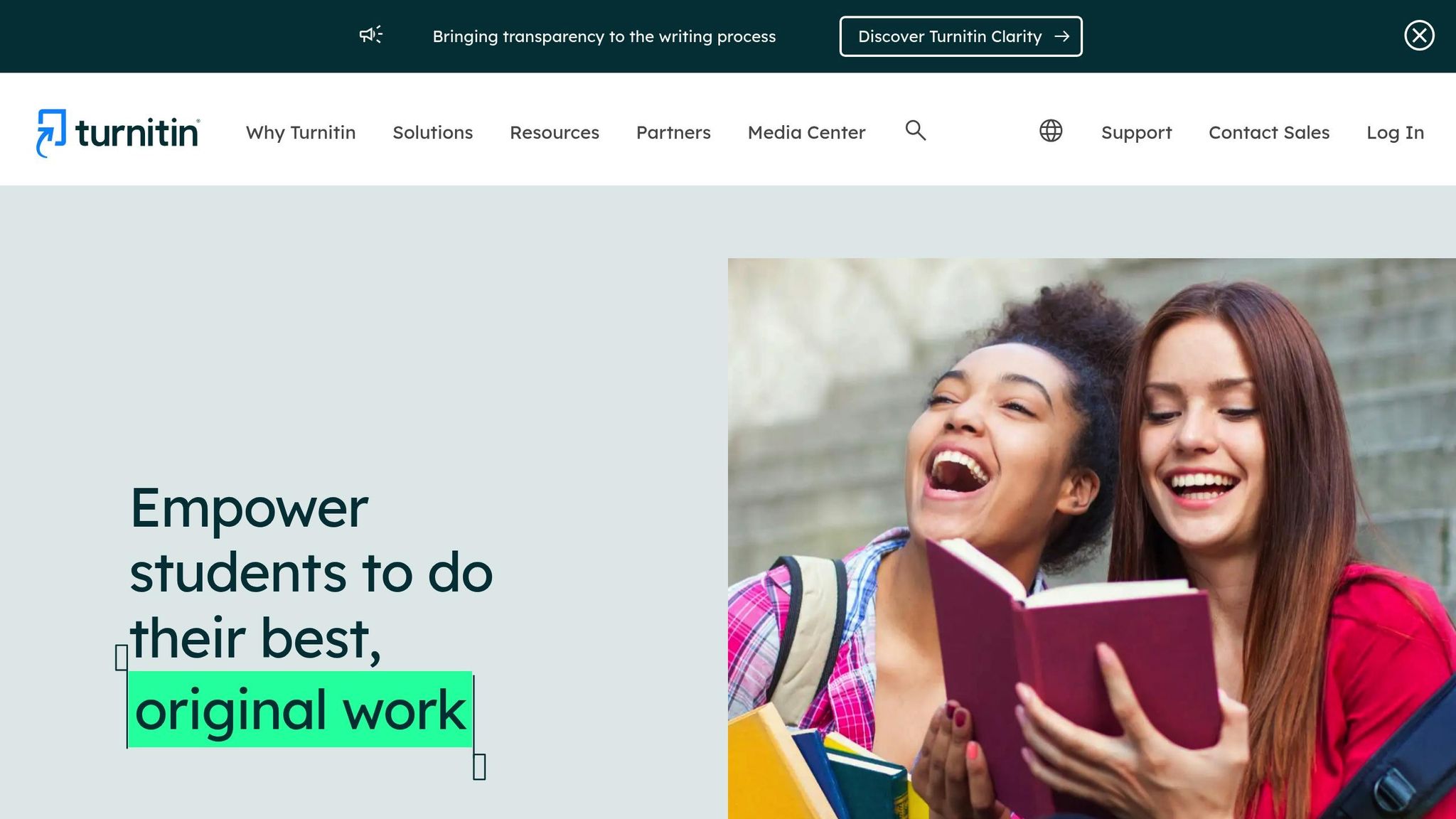
1. Yomu AI
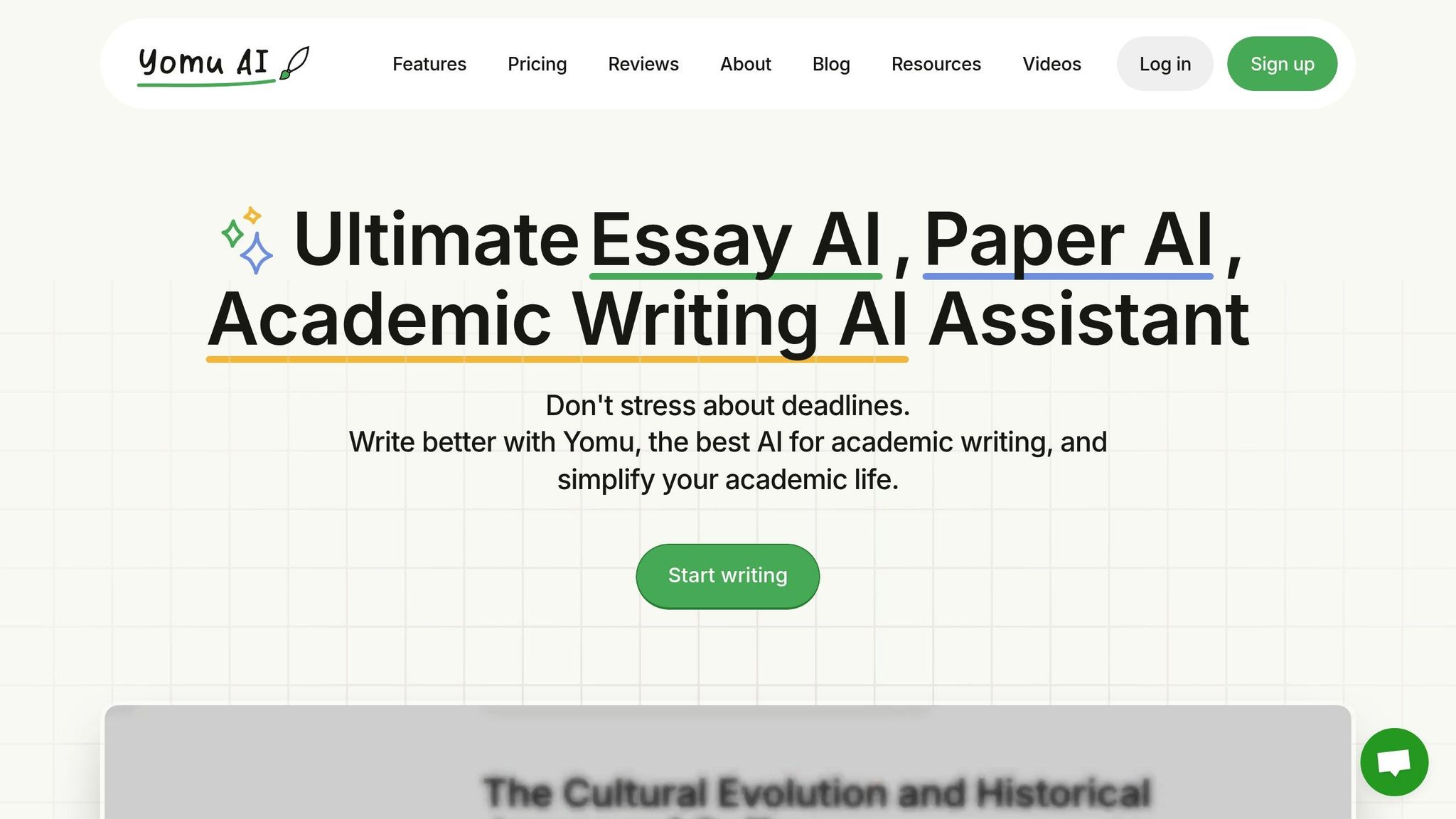
Yomu AI serves as an all-in-one academic writing assistant, designed to simplify the writing process for students and academic professionals alike.
Plagiarism Detection Accuracy
Yomu AI features a built-in plagiarism checker that scans your document against web sources and a vast academic database. It flags potentially copied sentences, identifies the original sources, and even highlights academic papers citing those sources. However, it stops short of providing a deeper originality analysis.
Integration with Academic Tools
Forget juggling multiple tools - Yomu AI creates a seamless environment for academic writing. You can draft your paper using its advanced formatting tools and effortlessly export it to formats like PDF, Word, or LaTeX, all while preserving your document’s structure.
Citation Management
Yomu AI, with Sourcely integration, simplifies citation management. It helps locate reliable sources and generates properly formatted references, ensuring your research is both credible and professionally cited.
Pricing
| Plan | Price | Key Features |
|---|---|---|
| Starter | $9 one-time | 10 AI actions, access to GPT-4o mini, priority support |
| Pro | $19/month | Unlimited AI actions, multiple AI models, advanced chat features |
| Ultra | $29/month | Access to top AI models, customizable writing style |
| Believer | $499 one-time | Unlimited access to GPT-4.5 and all premium features |
The Starter Plan is a budget-friendly option that provides 10 AI actions with no expiration date, making it great for occasional users. The Pro Plan steps things up with unlimited AI actions and access to multiple AI models, catering to frequent users. For those who need advanced tools and personalized features, the Ultra Plan offers access to premium AI models and the ability to customize your writing style. Finally, the Believer Plan is a one-time investment that unlocks unlimited access to GPT-4.5 and all premium features - perfect for users who need a complete, high-performance solution. Every plan also includes custom AI commands and priority support to guide you through the process.
Next, we’ll take a closer look at Scribbr and its offerings for academic writers.
2. Scribbr
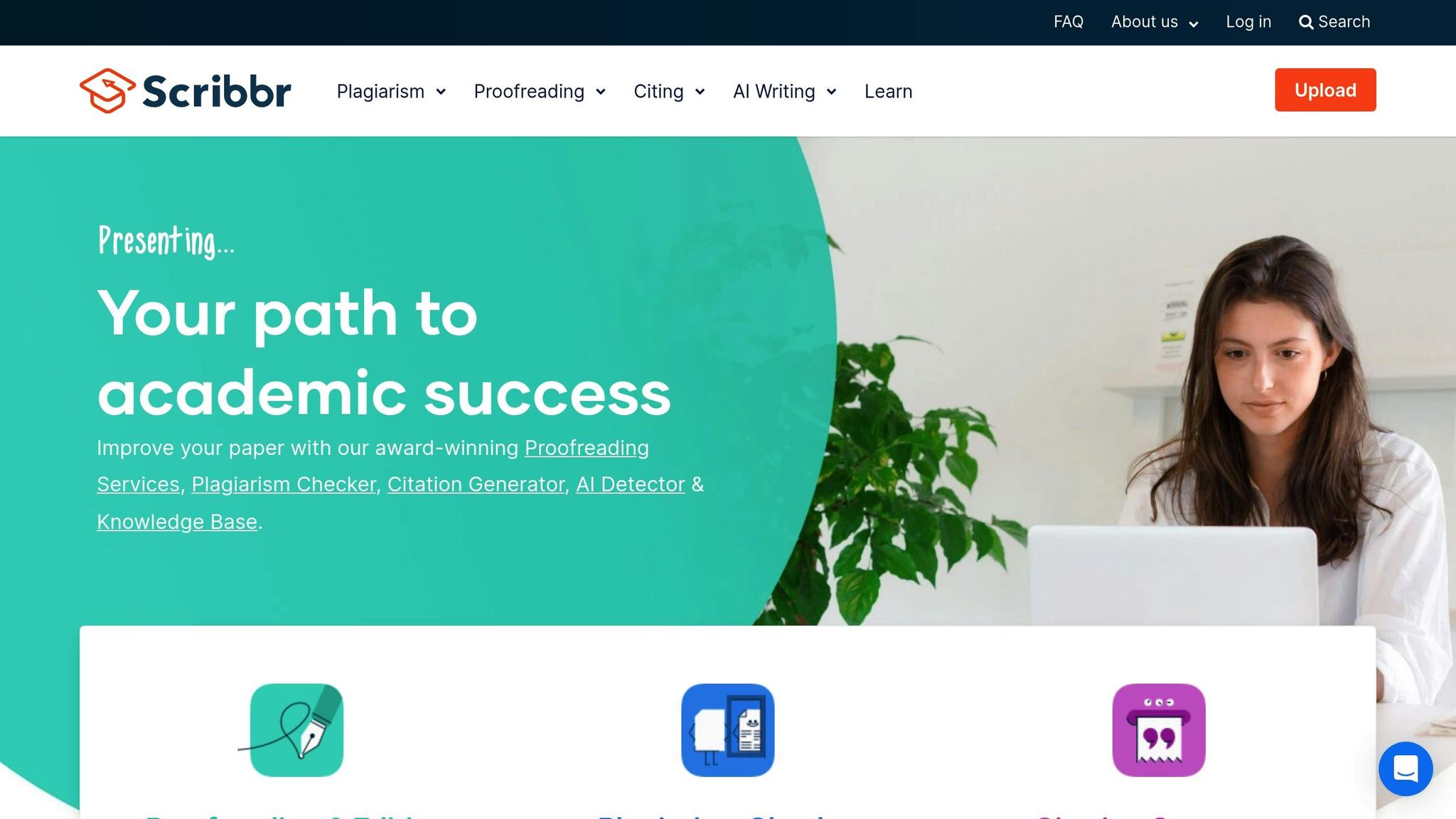
Scribbr is a pay-per-use plagiarism detection service known for its precision and reliability.
Plagiarism Detection Accuracy
In a comparison of 12 plagiarism detection tools, Scribbr scored an impressive 4.7, leaving competitors like PlagAware (3.7) and Compilatio (3.3) far behind. For context, free tools managed to detect only 43% of plagiarized content on average, while Scribbr identified 88% of such content.
This accuracy is largely due to its access to an extensive database. Scribbr taps into over 99.3 billion current and archived webpages, alongside 8 million publications from more than 1,700 publishers. It’s especially effective at spotting plagiarism in heavily edited texts, identifying both direct copies and significantly altered passages.
Integration with Academic Tools
Scribbr works seamlessly with popular academic writing platforms like Microsoft Word and Google Docs. It even provides helpful guidance for proper formatting within these platforms, making it a practical choice for students and researchers.
Pricing
Scribbr offers a simple pay-per-use pricing model, with a 15% discount for students and a 30-day free trial available. Here's a breakdown of its pricing:
| Document Size | Word Count | Price |
|---|---|---|
| Small | Up to 7,500 words | $19.95 |
| Normal | 7,500–50,000 words | $29.95 |
| Large | 50,000+ words | $39.95 |
This flexible structure lets users choose specific services, such as plagiarism or AI detection, without committing to subscriptions. For larger projects or unique requirements, Scribbr also offers custom pricing through direct consultation. Additionally, a limited free version of its plagiarism checker is available, which can be a handy option for students and academic writers looking to test the waters.
Next, we’ll take a closer look at how Quetext supports academic writing.
3. Quetext
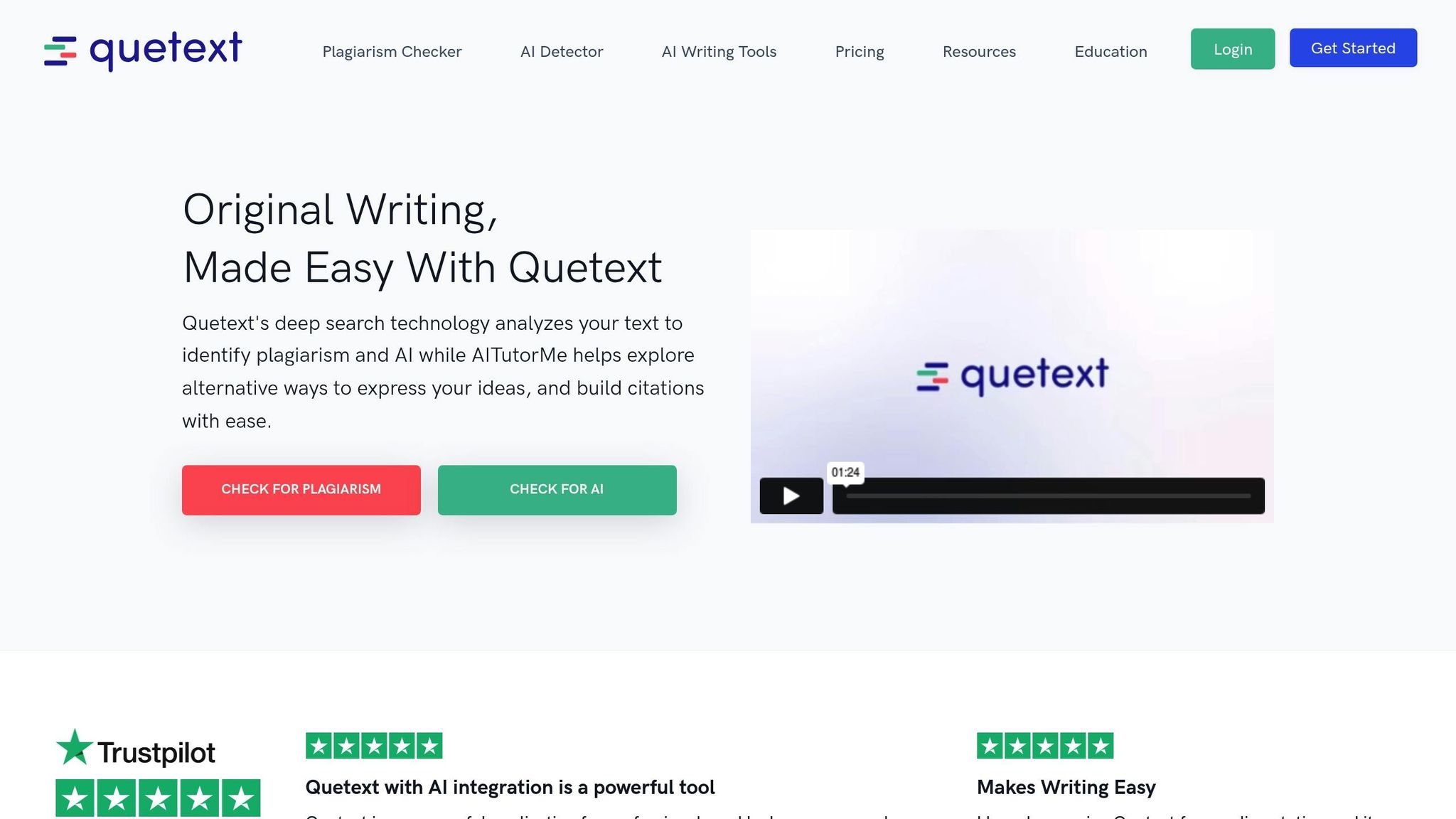
Quetext is a plagiarism detection tool that identifies both direct matches and paraphrased content. While its performance can vary, it offers a range of features that make it a practical option for many users, though its accuracy can sometimes be unpredictable.
Plagiarism Detection Accuracy
Quetext uses a three-step process - Contextual Analysis, Fuzzy Matching, and Conditional Scoring - to detect both exact matches and near-exact similarities in text. However, its accuracy has shown mixed results in tests, with detection rates ranging from 15% to 50% of plagiarized content. Additionally, it has been known to misattribute sources in some cases.
Integration with Academic Tools
Quetext integrates with platforms like Google Drive and Microsoft OneDrive, allowing for bulk uploads and the simultaneous review of multiple documents. It supports 14 languages and features a Remarks Tool for group feedback, making it useful for collaborative projects and peer reviews. For institutions, Quetext works with systems like Anthology and is expanding its compatibility with learning management systems such as Canvas, Clever, and Moodle.
In October 2024, user Nikunj Jain praised Quetext for its citation capabilities, saying it "provides proper citations, saving time". Similarly, Abhishek Nair noted its ability to "break down everything, showing sources and exact matches". These features streamline academic workflows by integrating plagiarism detection with citation management.
Citation Management
Quetext includes a citation generator that supports MLA, APA, and Chicago styles. This tool works alongside its plagiarism checker, allowing users to address citation issues while verifying their work’s originality. The combination of an online citation generator and a citation assistant simplifies the process of maintaining academic integrity.
Pricing
Quetext offers flexible pricing through a freemium model and subscription plans tailored to different needs:
| Plan | Price | Key Features |
|---|---|---|
| Free | $0/month | Deep Search (up to 500 words), AI detection (up to 250 words), basic citation tools |
| Essential | $11.99/month (yearly) or $13.99/month | 100,000 words/month, bulk uploads (up to 20 files), cloud integration, grammar check |
| Enterprise | Customizable, starting at $11.99/month | Unlimited users, admin controls, Remarks Tool, customizable word counts |
The Essential plan allows for 100,000 words per month and supports bulk uploads of up to 20 files. For larger organizations, the Enterprise plan offers unlimited user access and volume discounts. Quetext also provides optional bundles - Silver, Gold, and Platinum - that combine plagiarism detection with additional tools like AI detection and tutoring services.
Next, we’ll take a closer look at Grammarly’s approach to plagiarism detection and how it complements its writing tools.
sbb-itb-1831901
4. Grammarly
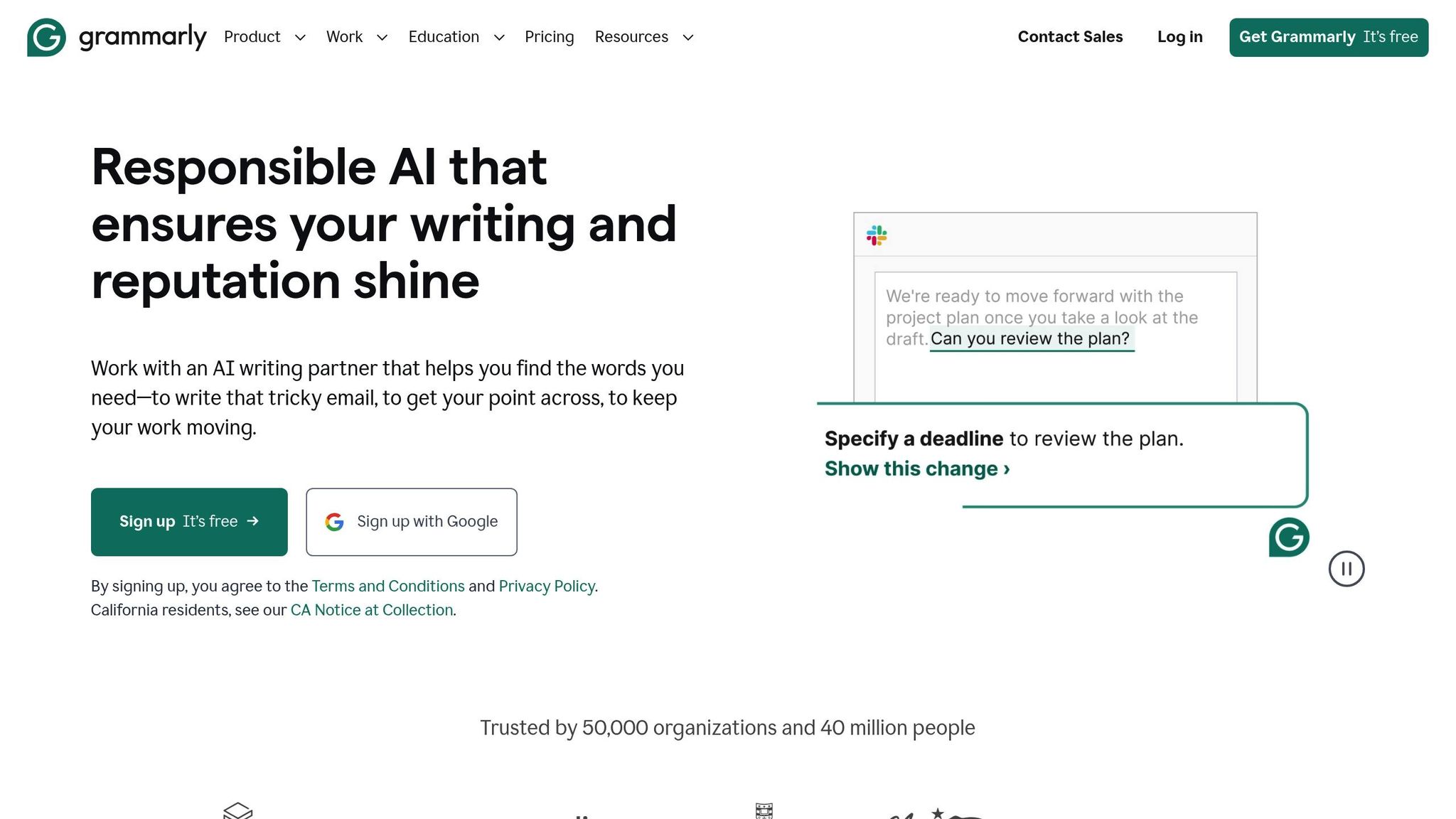
Grammarly is a writing assistant designed to improve grammar, style, and clarity in your writing. Its Premium and Business plans also include a plagiarism detection feature, aimed at maintaining academic integrity. While Grammarly is effective for general writing and casual content, its plagiarism checker may not be robust enough for rigorous academic standards.
Plagiarism Detection Accuracy
Grammarly's plagiarism checker scans through an impressive 16 billion web pages to identify potential matches. However, with an accuracy score of 3.0 and detection rates below 40%, it’s best suited as a preliminary tool rather than a comprehensive solution for academic submissions.
Integration with Academic Tools
Grammarly integrates effortlessly with widely used platforms, including Microsoft Word, Outlook, PowerPoint, Teams, and Excel, on both Windows and Mac systems. It also supports Google Docs via browser extensions compatible with Chrome, Safari, Firefox, and Edge. Additionally, Grammarly works across more than 500,000 apps and websites, offering flexibility through desktop applications, browser extensions, and a web-based editor.
The platform's Authorship feature tracks your writing process and sources, making it useful for academic workflows. This feature is available in Google Docs and as a beta option in Microsoft Word. Despite these integrations, Grammarly's plagiarism detection is better suited for an initial review rather than in-depth analysis.
Pricing
Grammarly’s plagiarism detection is only available in its Premium and Business plans, with no access in the free version. Here’s a breakdown of the pricing:
| Plan | Monthly | Quarterly | Annual |
|---|---|---|---|
| Grammarly Free | $0 | $0 | $0 |
| Grammarly Premium | $30/month | About $20/month ($60 quarterly) | Approximately $12/month ($144 annually) |
| Grammarly Business | $25/user/month | - | $12.50–$15/user/month |
For teams of 3–9 members, the annual Business plan costs about $15 per user per month. Larger teams (50+ users) can access rates as low as $12.50 per user per month. Discounts between 20% and 30% are frequently offered, which can reduce the annual Premium plan cost to around $100.80. However, some users report that Grammarly is less effective at identifying edited or paraphrased content.
Next, we’ll explore how Originality.ai takes a more specialized approach to plagiarism detection.
5. Originality.ai
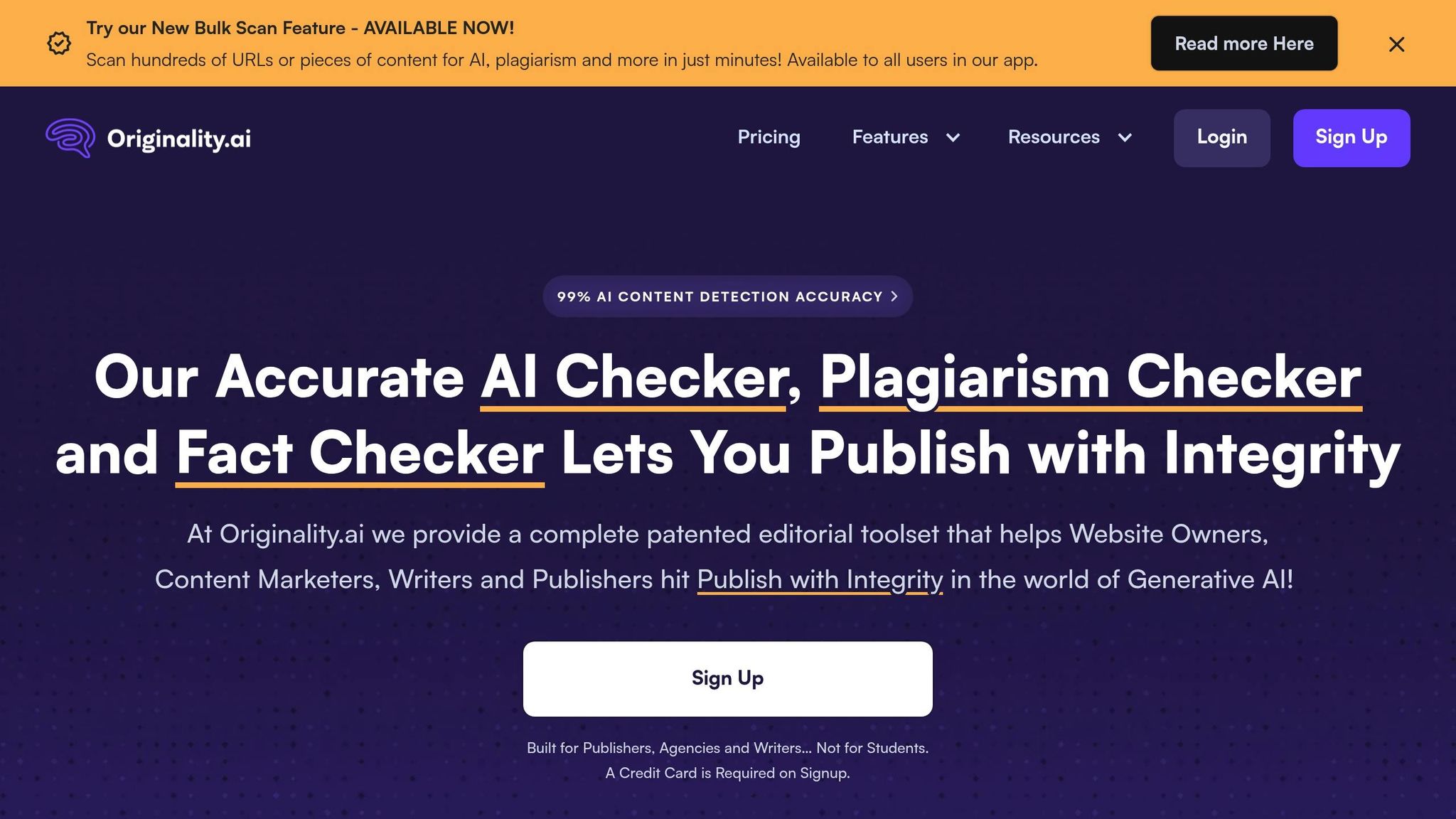
Originality.ai is designed with publishers, agencies, and professional writers in mind, making it a better fit for SEO and commercial content creation rather than academic use. Its focus on these areas sets it apart from tools tailored for academic purposes, and its features reflect this distinction.
Plagiarism Detection Accuracy
Originality.ai’s Plagiarism Checker V2 boasts an impressive 99.5% accuracy in global plagiarism detection, outperforming several well-known competitors like Copyscape, Grammarly, and PlagScan (Turnitin) across different types of plagiarism, including global, paraphrase, and patchwork plagiarism at both 5% and 15% thresholds.
"Originality.ai is excited to announce that our upgraded plagiarism checker is now available! Confidently detect plagiarism with up to 99.5% accuracy." - Jonathan Gillham, Originality.AI
The tool also excels in identifying paraphrased content, achieving a 99% success rate while keeping false positives under 1%. This level of precision makes it a standout choice for commercial writers who require reliable plagiarism detection.
Integration with Academic Tools
While Originality.ai offers useful features for content creators, its integration capabilities are geared more toward commercial workflows than academic needs. The platform includes an AI Content Detector API, which can be integrated into custom workflows, along with a Chrome extension and a WordPress plugin. Examples of integration include connecting the API with tools like Google Sheets, AirTable, and Excel.
However, these integrations don’t extend to academic-specific tools such as citation managers, learning management systems, or university platforms. This limitation makes it less practical for students and researchers who rely on such systems.
Pricing
Originality.ai offers flexible pricing plans tailored to commercial users, with three main options:
| Plan | Price | Credits | Word Scans | Key Features |
|---|---|---|---|---|
| Pay-as-You-Go | $30 one-time | 3,000 credits | 300,000 words | 2-year expiry, basic scans |
| Monthly Subscription | $14.95/month | 2,000 credits | 200,000 words | API access, team tools, full features |
| Enterprise | $136.58/month* | 15,000 credits | 1,500,000 words | Advanced team management |
*Billed annually.
The Pay-as-You-Go plan is a one-time payment of $30, offering 3,000 credits (equal to 300,000 words) with a 2-year expiration. Additional credits can be purchased at $0.01 per credit. This plan includes features like AI scanning, plagiarism detection, readability analysis, and a 30-day scan history.
The Monthly Subscription costs $14.95 per month and provides 2,000 credits that reset monthly. It also includes premium features such as API access, full site scans, URL scanning, and team management tools.
For larger teams, the Enterprise plan offers advanced management features, 15,000 monthly credits, and the ability to scan up to 1,500,000 words. This plan is billed annually at $136.58 per month.
User reviews on GetApp rate Originality.ai’s value for money at 5.0/5, though pricing has drawn some criticism. One user remarked, "The price is quite high. I hope they can lower the price". With each credit equating to 100 words of scanning, the platform is clearly aimed at professional writers and agencies rather than academic users.
Comparison: Pros and Cons
When it comes to plagiarism detection tools, each option brings its own set of strengths and limitations. Academic writers, students, and professionals can weigh these features to find the best fit for their needs and budget. Here's a closer look at how some of the leading tools compare.
Yomu AI combines plagiarism detection with citation management and AI-powered writing tools, making it a versatile choice for students and educators. On the other hand, Scribbr focuses on delivering high detection accuracy through a pay-per-use model.
Scribbr is known for its precise plagiarism detection, backed by extensive database coverage. It also integrates with MS Word, using the Track Changes feature to highlight corrections automatically. However, its pricing structure - ranging from $19.95 to $39.95 per document - can be a drawback for frequent users.
"Catches plagiarism more accurately than any other checker" - Scribbr
Quetext stands out as a budget-conscious option, offering a free plagiarism check for up to 500 words and affordable paid plans starting at $11.99 per month. While its free version is limited in scope, it remains a solid choice for those prioritizing affordability.
Grammarly integrates seamlessly with platforms like Microsoft Word, Google Docs, Slack, and Discord. Its Premium plans, priced between $12 and $30 per month, focus on writing enhancements. However, its plagiarism detection capabilities are less reliable compared to other tools.
Originality.ai achieves an accuracy rate of about 85%, making it a strong contender for commercial purposes. However, it’s not designed for academic use and lacks integration with citation management tools. Pricing starts at $30 per month.
| Tool | Detection Accuracy | Best For | Monthly Cost | Key Limitation |
|---|---|---|---|---|
| Yomu AI | High | Academic writing workflow | Varies | Still relatively new |
| Scribbr | 88% | Accuracy-focused users | Per-paper ($19.95–$39.95) | Can be expensive for frequent use |
| Quetext | Good | Cost-conscious users | Starting at $11.99 | Limited free version |
| Grammarly | Below 40% | Writing improvement | $12–$30 | Weak plagiarism detection |
| Originality.ai | 85% | Commercial content | Starting at $30 | Not designed for academic use |
Ultimately, your choice depends on what matters most to you. If you're looking for a tool that integrates academic support into your workflow, Yomu AI could be a strong contender. For those who need highly accurate plagiarism detection, Scribbr might be worth the higher per-paper cost. Quetext is ideal for budget-conscious users, while Grammarly shines for general writing improvement, even if its plagiarism detection falls short. For commercial content creators, Originality.ai offers a reliable solution tailored to their needs.
Conclusion
After weighing the detailed comparisons above, here’s a quick rundown of each tool’s standout features. Your choice should depend on your academic goals, workflow preferences, and budget. Each tool brings its own strengths to the table, catering to different priorities.
Yomu AI is ideal for academic writers looking for an all-in-one platform. It combines plagiarism detection, citation management, and AI-driven writing assistance, streamlining multiple aspects of the academic writing process.
Scribbr emphasizes precision, making it a top pick for those who need highly accurate plagiarism detection. Its ability to handle heavily revised texts justifies its higher per-paper cost, though frequent users should be mindful of the cumulative expense.
Quetext stands out as a budget-friendly option for students, with premium plans starting at $8.25 per month. Despite its affordability, it delivers solid performance, proving that quality doesn’t always come at a high price.
Grammarly shines in writing improvement, seamlessly integrating with platforms like Microsoft Word and Google Docs. While its plagiarism checker is more of a secondary feature, it complements the tool’s primary focus on enhancing writing.
Originality.ai caters to commercial content creators with advanced AI content detection. However, its limited academic features and higher monthly cost make it less appealing for academic purposes.
"Plagiarism and similarity are very different concepts. What these tools promise is to find overlapping texts in the document examined. Overlapping texts do not always indicate plagiarism, thus the decision about whether plagiarism is present or not should never be taken on the basis of a similarity percentage. The similarity reports of these tools must be inspected by an experienced human being, such as a teacher or an academic."
– Foltýnek et al.
Before committing to any tool, it’s wise to test it out. Many platforms offer free trials or demo versions, which allow you to assess usability, report clarity, and detection accuracy with your own content. Additionally, take the time to review privacy policies, as data confidentiality practices can vary significantly between providers.
FAQs
What should I look for in a plagiarism detection tool for academic writing?
When selecting a plagiarism detection tool for academic writing, there are a few essential aspects to keep in mind. First, accuracy is non-negotiable - you need a tool that reliably spots potential issues without over-flagging. A simple, user-friendly interface is also key, allowing you to upload and review documents without unnecessary hassle. Plus, tools that provide clear, easy-to-understand results can make the revision process much smoother.
It’s also worth checking if the tool fits seamlessly into your academic routine. For instance, does it support citation management? Does it offer features to refine your text? Lastly, prioritize a tool that helps uphold academic integrity, ensuring your work remains original and meets high standards.
Why is accuracy important in plagiarism detection tools for students and academic writers?
Accurate plagiarism detection tools play a crucial role in identifying unoriginal content with reliability, reducing both false positives and false negatives. This ensures that students and academic writers can uphold academic integrity while producing work that aligns with ethical standards.
These tools also streamline the process by delivering precise results, saving users from the hassle of manual checks. This not only cuts down on stress but also frees up time to focus on refining writing and improving citation practices.
What makes academic plagiarism detection tools different from those used for commercial content creation?
Academic plagiarism detection tools are crafted to uphold scholarly integrity, ensuring rigorous plagiarism checks. They scan content against vast academic databases, research articles, and journals, employing sophisticated algorithms to detect overlaps. These tools are specifically designed to align with the strict standards required in academic writing and research.
In contrast, tools aimed at commercial content creators focus on ensuring originality for digital marketing and online publishing. They often come with features like SEO optimization, AI-text detection, and writing enhancement tools. While academic tools prioritize accuracy and credibility, commercial tools emphasize speed and originality, catering to a wider, non-academic audience.
